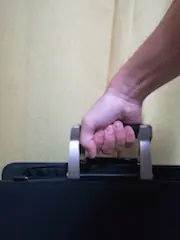In this article, I will introduce a theory to control your choice on the mouse grip. This will help beginners not to go astray into the labyrinth of mouse grip and sensitivity, and even for veteran players to realize that the mouse grip is correct or not.
What is 4 stance theory
In any athletics, knowing how to control your body is the shortest path to great improvement.
4 stance theory is the fundamental theory defined by a Japanese chiropractor Soichi Hiroto about ten years ago. The theory categorizes human bodies into only 4 (A/B x 1/2) types based on how they can move their bodies smoothly and defines the distinct checker which is perfectly doable by any person.
The theory was immediately ported to powerlifting by a famous Japanese powerlifter Daisuke Midote, a former champion in heavyweight class. Thanks to Midote, “we” can nowadays know the best way to crouch and then stand in squatting based on your type. The theory has been ported to other fields like golf, soccer, track and fields, … but this article will not talk about these applications but only on mouse grip.
But as far as I know, the former “we” is limited to Japanese people because 4 stance theory and its variants are never well informed to the globe. So this article is maybe the first article to introduce the theory to “everybody” and I hope this will help you improve your body control especially in aiming.
Check your 4 stance type
The 4 type is a crossing of A/B and 1/2. So if you are type A in the first checker and the 2 in the second checker you are said to be type A2 (like me).
Check A or B
When you hold a bag, if you feel comfortable to hang the bag you are type A and if you feel comfortable to grip the bag you are type B.


Check 1 or 2
When you hold a bottle or cup, if you feel comfortable to hold it with thumb-index-middle fingers you are type 1 and if you feel comfortable to hold it with thumb-middle-ring fingers you are type 2.


Application to the mouse grip
As you see in above, checking the 4 stance type is based on how you grip stuffs so it's natural to apply the 4 stance type directly to the mouse grip.
Based on type A or B
If you are type A you should have better control with the fingers so it's good to consider finger grip or claw grip. If you are type B you should have better control not with the fingers but palm or some part closer to the wrist.
The type A or B is much important than the type 1 or 2 firstly because it affects the mouse you should choose. For example if you are type A you should choose a mouse that is designed to hold with finger or claw grip. Secondly, what part of the body parts you use to control the mouse affects the sensitivity you choose because the size of the body part have a tradeoff in control and the distance it moves. For example, fingers have better control than arm but it can only move the mouse in the much shorter distance.
Based on type 1 or 2
If you are type 1 you want your index finger better sit stable on the mouse and in type 2 otherwise, the ring finger. But as I said above, type 1 or 2 is less important than type A or B so you don't need to be too much serious about this.